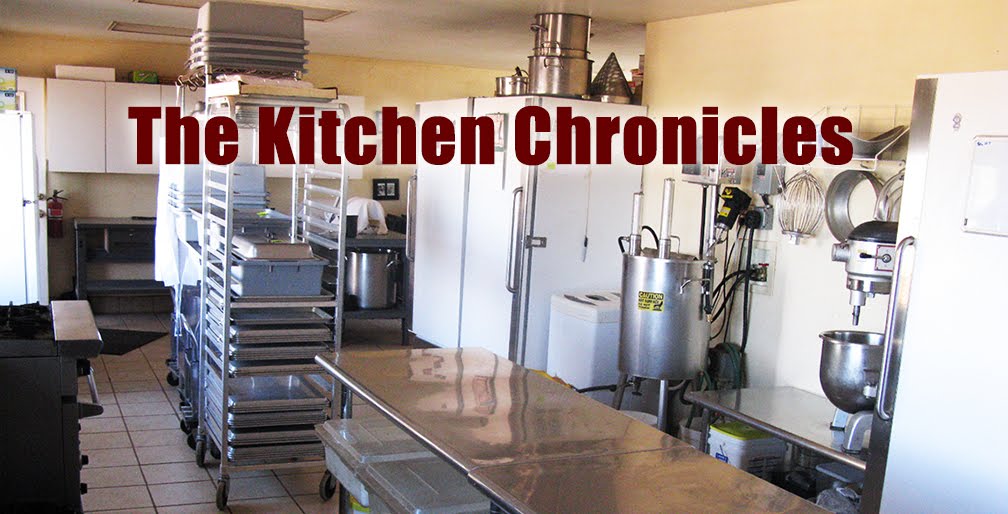I mentioned in a previous post on Butchering Rabbits that we had raised rabbits for meat in a "colony-style" setting. That is not, apparently a management style that is very well know or widely discussed as I have have had numerous contacts for more information about it.
Here is a re-print of some information on the subject we published on an ancient iteration of our Ranch Website.
This pretty much sums up my total knowledge about raising rabbits in the colony style. The information is almost a decade old so you might want to do more research elsewhere if you're seriously interested in the subject.......
In early December of 2001 we gave up on the traditional, standard cage approach to breeding. Nothing we tried had worked and we had not gotten a single live litter in 8 months of working with our fancy, pedigreed Satins.
Typical caged approach to raising rabbits (how we started out):
In desperation we converted to a "Colony-Style" living arrangement for them, figuring that, if nothing else, the rabbits would be happier. We also, over time, got rid of all those fancy rabbits and went with generic "white meat rabbits" from our local feed store for breeding stock - another excellent decision. We now keep 4 to 6 breeding does and 1 or 2 bucks on hand, plus their litters. The management changes have proved to be a great success for us.
"Colony-Style" Rabbit Keeping:
Colony-style rabbit raising is a meat rabbit management method that, at its most basic, is simply putting a group of doe rabbits and a buck or two in an escape-proof area and allowing them to do as nature intended. We let ours share the space with our chickens in their large fenced pen and house. The buns have a series of tunnels, runs, brambles and nest boxes in which to live and play. Exactly 31 days (a rabbit's gestation period) from our conversion to this style we were presented with 3 fine nests of baby bunnies from our does. The rabbits never looked back from there!
There are definite up- and down-sides to this style of keeping rabbits.
To the upside, the amount of work for the keeper is efficiently minimized - keeping the communal feeders and waters filled is about it; also , the rabbits live a much more normal life - running all over the place, hunting for food, interacting with others of their kind etc . Another plus is that production of offspring can be maximized (see downsides). The rabbits' overall health is greatly improved - allowing them lots of exercise, sunlight and space away from wire-floored cages, closed conditions and forced proximity to possible pathogens, they are much less likely to fall to the common diseases and ailments of traditional rabbitries.
On to the downside:
First, colony-style settings can be very rough on the does. They are capable of getting pregnant again the day they give birth and in a pure colony situation they often do. With no breaks, their bodies are under a tremendous amount of strain. This fast cycling will yield the highest number of kits per doe per year (a goal the species certainly strives for in the wild), but you will also have to expect to replace your breeding stock much more frequently than with other management methods.
 |
| Two |
Second, there is no opportunity for micro managing your herd: forget about breeding calendars, special matings and such. It is impossible to monitor or adjust the individual rabbits' feed consumption and harder to monitor their health. Also, there are, generally, no opportunities for playing with the babies - at butchering time (at about 8 weeks of age) there are some essentially wild rabbits to contend with.
This method is assuredly not for raising cuddly pet or show bunnies.
With all that said, we actually practice a MODIFIED colony style of management. We cycle our buck (or bucks) through the colony on a periodic basis but keep them in their own, separate (but adjacent) colony the rest of the time. This dramatically cuts down on the wear and tear on the does. It also allows us to regulate the number of litters and frequency of butcher days we need to have. To be honest, with just 4 does and one buck we were harvesting 25 to 40 rabbits once a month and that was more than we could come close to keeping up with consuming!
We also, from time-to-time, will take a just-weaned batch of kits (about 4 weeks of age), bring them in the house in a mini colony set-up and work on socializing them for the pet market. Mostly in the spring, especially around Easter, it is well worth the effort for us to hand feed and spend time with a dozen or two baby bunnies so they can be sold tame as pets.
Here are some pictures of our rabbits and babies in their habitat...
August 2005 Update
As of this time we have dispersed our little rabbit herd to other breeders in the area but may get back into them again sometime in the future . With enough rabbit in the freezer to keep us happy for a while, it didn't make much sense to keep the last 4 does just hanging around.







Hello,
ReplyDeleteI am really impressed by your results with your colony. I am trying to build a colony setting for 5 newzealand cross rabbits and I am having trouble deciding what size the living space should be, and was wondering what size your pen is for your five rabbits.
Thanks
Jessie
Jessie- I guess you didn't notice that we stopped doing rabbits in 2005. When we did them they were in a roughly 30'x30' yard with a 20'x20' building in it that they shared with about 12 chickens. We didn't build it specifically for them, it was just what we had. Good luck with your project
ReplyDeleteHallo chef....your articles is attractive. thanks
ReplyDeletekelinci